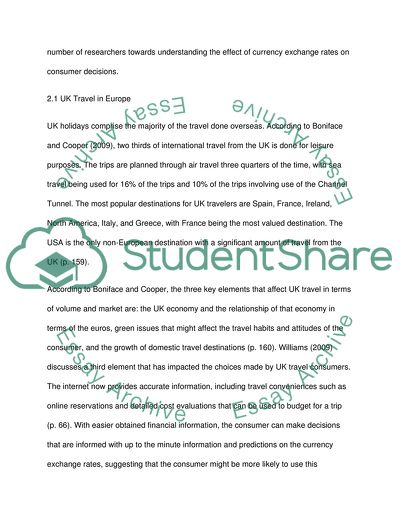Cite this document
(The Influence of Changing Currency Rates on Travel Behaviour Research Proposal - 1, n.d.)
The Influence of Changing Currency Rates on Travel Behaviour Research Proposal - 1. https://studentshare.org/finance-accounting/1748912-the-influence-of-changing-currency-rates-on-consumers-travel-behaviour-exploring-uk-consumers-travel-to-europe
The Influence of Changing Currency Rates on Travel Behaviour Research Proposal - 1. https://studentshare.org/finance-accounting/1748912-the-influence-of-changing-currency-rates-on-consumers-travel-behaviour-exploring-uk-consumers-travel-to-europe
(The Influence of Changing Currency Rates on Travel Behaviour Research Proposal - 1)
The Influence of Changing Currency Rates on Travel Behaviour Research Proposal - 1. https://studentshare.org/finance-accounting/1748912-the-influence-of-changing-currency-rates-on-consumers-travel-behaviour-exploring-uk-consumers-travel-to-europe.
The Influence of Changing Currency Rates on Travel Behaviour Research Proposal - 1. https://studentshare.org/finance-accounting/1748912-the-influence-of-changing-currency-rates-on-consumers-travel-behaviour-exploring-uk-consumers-travel-to-europe.
“The Influence of Changing Currency Rates on Travel Behaviour Research Proposal - 1”. https://studentshare.org/finance-accounting/1748912-the-influence-of-changing-currency-rates-on-consumers-travel-behaviour-exploring-uk-consumers-travel-to-europe.


